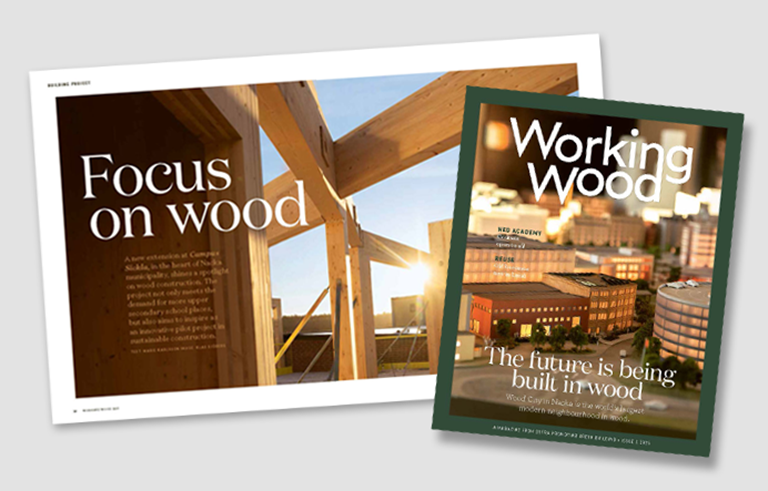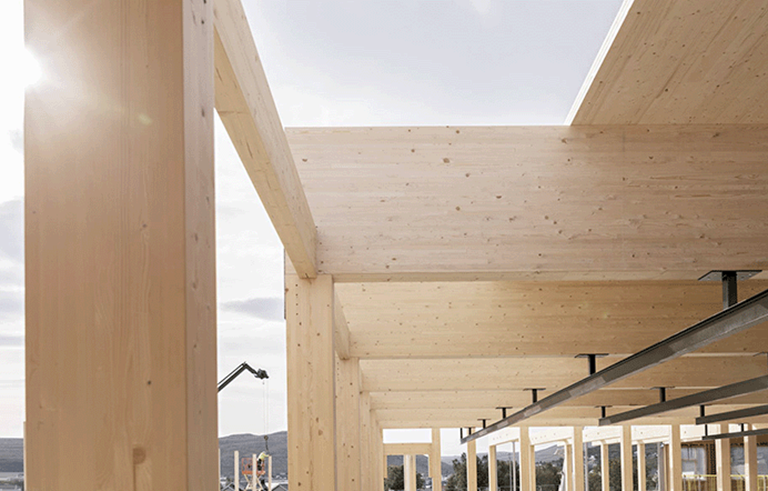Olle’s Chronicle
Olle Berg presents his personal analysis of a year marked by sharp fluctuations, political unrest, and economic uncertainty. With extensive industry experience and a keen eye for global interconnections, he highlights how the timber market is being shaped by everything from US tariff policies to China’s property crisis and Europe’s economic downturn.

Challenging times for Swedish sawmills and the global timber market
The cautious optimism surrounding a mild recovery from the global recession that emerged in Q4 2024 has gradually faded as 2025 has progressed. Following Donald Trump’s inauguration as President in November 2024, the political agenda pursued by the US administration has triggered significant instability in the global economy. The timber market, worldwide, has not remained unaffected.
United States – promises yet to be fulfilled
Initial optimism around residential construction at the time of Trump’s inauguration—driven by expectations of tax cuts for both businesses and consumers—has since waned. The impact of elevated tariffs on foreign goods, rising inflation, and the absence of anticipated interest rate cuts have significantly influenced American consumer behavior in the housing market. Entry barriers remain high for the large segment of first-time homebuyers. Tariffs announced against the EU, China, and others have had a strongly negative effect on the economy and have hit the timber industry hard. However, this is not the sole reason for the challenging conditions facing the construction sector globally, nor the only factor behind the current weak profitability in Sweden’s sawmilling industry.
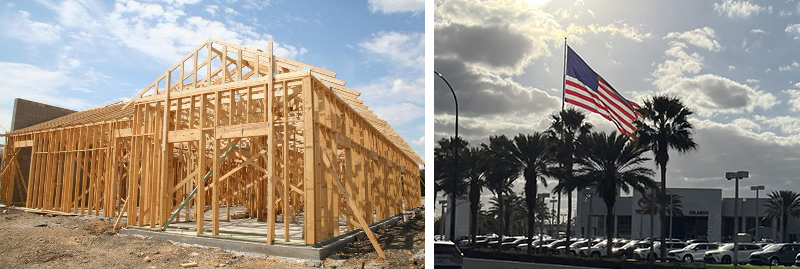
China – from growth engine to braking force
From a market perspective, several major challenges persist. The Chinese market, which has been a stable outlet for Swedish producers over the past 10–15 years, is now facing severe difficulties. The property boom that began in the early 1990s has come to an abrupt end. The housing sector has undergone dramatic changes, with vast surpluses of vacant flats, a sharp decline in new construction, and a speculative bubble that has wiped out the savings of many Chinese consumers. This has led to a steep drop in private consumption. Despite active stimulus policies from the Chinese government, consumer behavior has not shifted. Low domestic consumption, combined with high US tariffs, has resulted in economic growth figures far below those seen over the past two to three decades.
Weak construction activity and low housing turnover have also hit the wood-consuming industries hard, reducing demand for imported spruce and pine from Europe. European pine imports have been particularly affected, as Russian producers have prioritized exports to China. With fewer alternative markets due to sanctions following the invasion of Ukraine, Russian suppliers have increased their market share in a declining market. Russian softwood now accounts for 70% of China’s limited coniferous timber imports.
Middle East and North Africa – Promising Developments with Limitations
Turning to another key region for Swedish sawmills—the Middle East and North Africa—the situation is somewhat different. So far in 2025, North African markets have shown solid underlying consumption.
Construction activity in Morocco is booming, partly due to preparations for hosting the FIFA World Cup. Egypt and Algeria have substantial housing needs, and their ability to meet these demands is closely tied to oil price developments. A period of strong USD inflows has facilitated exports during 2025. However, Algeria has recently reintroduced import licensing requirements for timber and other goods, allowing authorities to control foreign currency flows.
Weak consumption in other major markets—such as China, Europe, and domestic markets in Sweden and Finland—has led to increased timber flows into the region over the summer, resulting in rising inventory levels among importers. This has exerted downward pressure on prices, significantly eroding profitability for Scandinavian producers.
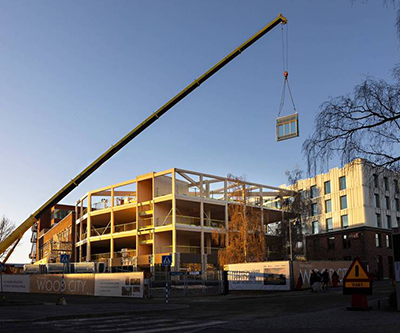

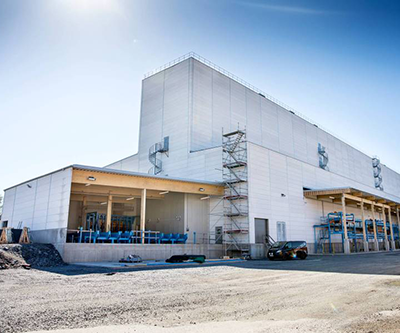
Europe – Rate cuts that fall short
Interest rates across Europe have gradually declined, which is positive for both new construction and renovation. However, these cuts have not been sufficient, and forecasts suggest only modest improvements—far below the pace needed. Central European sawmills, heavily reliant on domestic markets, are operating at significantly reduced capacity, squeezed by high raw material costs and falling timber prices. Ongoing tariff discussions, currently pointing to 15% duties, and continued uncertainty about future regulations have likely prolonged the recession beyond what might otherwise have occurred.
Nonetheless, there are some positive signs in specific markets and segments—Germany, for instance, has seen an uptick in timber industry orders. At the same time, supply to European markets has increased due to weakening demand in domestic markets and China, coupled with rising production in Sweden and Finland.
Sweden – Export reliance and a pressured domestic market
It’s easy to overlook the importance of the domestic market for Swedish sawmills, given that 70% of production is exported. Yet the remaining 30% consumed within Sweden makes it the single largest market for most producers. Alongside Germany, Sweden’s construction sector has seen the steepest decline since the pandemic boom years. Currently, there is a slight recovery in new builds and a growing impact from the temporarily increased ROT tax deduction, but timber consumption remains well below what is considered a “normal” level for the Swedish market.
“There is reason to believe that the economic cycle has bottomed out and that growth prospects for 2026 are improving. This offers some optimism for timber prices in late 2025 and beyond.”
A price gap that cannot be bridged
The strained global timber market—with depressed prices and a weak oversupply—has led to a downward price trend in Q3 2025. Price developments vary by species: pine availability has increased, while spruce log supply has declined. As a result, price adjustments have primarily affected pine products.
There are signs that prices bottomed out in Q3, with a correction expected in Q4. This is not entirely market-driven but rather a consequence of sawmills’ squeezed margins and limited log availability in autumn, which helps restore market balance.
Typically, there is a correlation between log prices and the prices of sawn and planed timber, albeit with some delay. Currently, the gap between log prices and sawn timber prices is too wide, severely impacting profitability for many Swedish producers. Still, there is reason to believe that the economic cycle has reached its trough and that growth prospects for 2026 are improving, offering some optimism for timber prices in late 2025 and beyond.
What happens next?
Given current cost structures, it is reasonable to expect production curtailments and/or other measures unless market and raw material conditions improve. Based on long-standing industry experience and historical business cycles, market conditions can change rapidly in an industry characterized by high volatility—where even minor shifts in supply-demand balances can trigger swift reversals.
Published: 2025-09-12
"Based on my own experience, after many years in the industry, I know that market conditions can shift rapidly—especially in a sector that has long been marked by significant volatility"

Olle
Berg
Direktör Marknad och Affärsutveckling
EVP Market and Business Development
Visitingaddress:
Råsundavägen 12
Solna
Postadress:
Setra
Box 3027
16903
Solna



